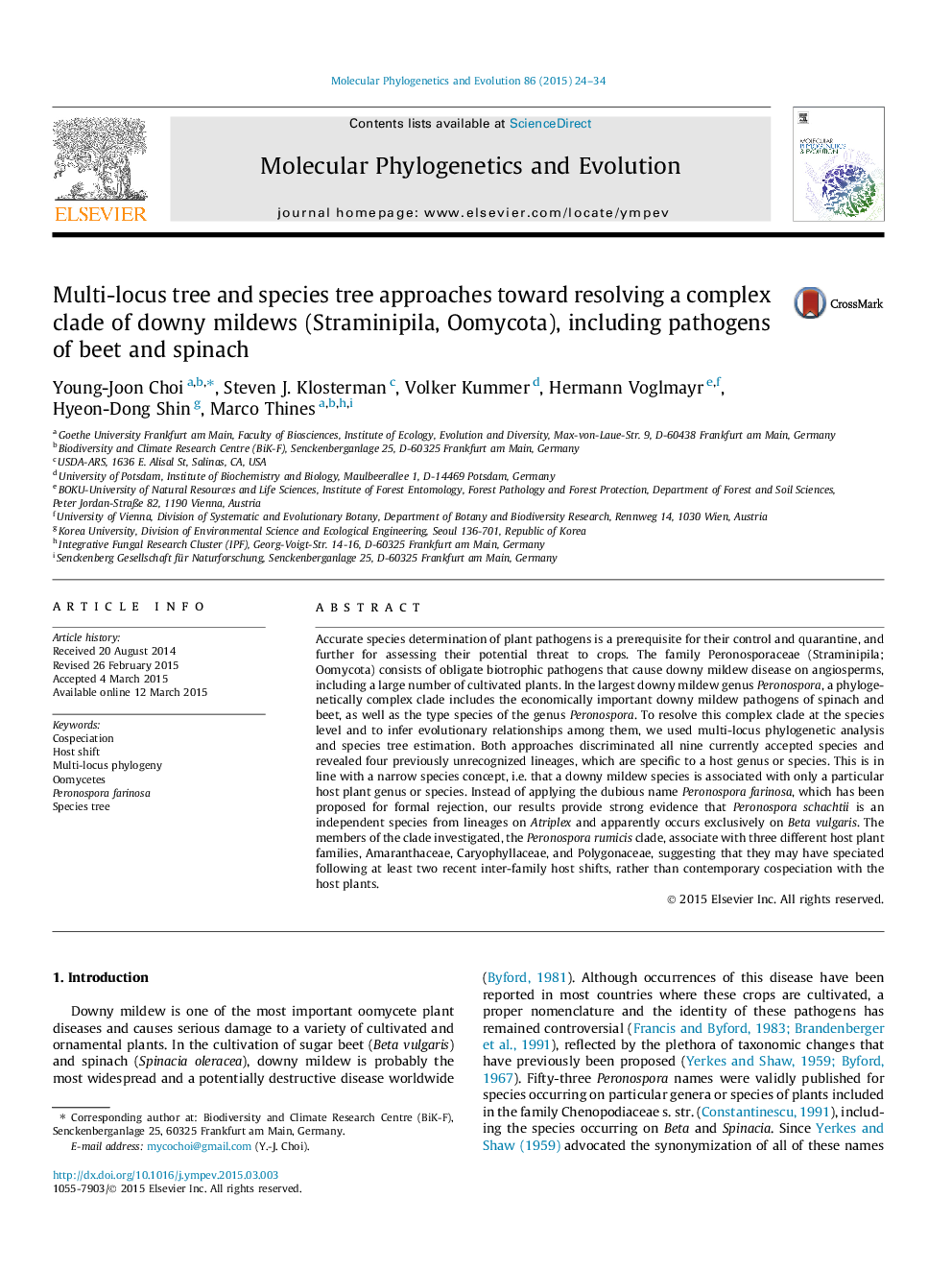| کد مقاله | کد نشریه | سال انتشار | مقاله انگلیسی | نسخه تمام متن |
|---|---|---|---|---|
| 2833831 | 1570810 | 2015 | 11 صفحه PDF | دانلود رایگان |

• The distinctiveness of the type species of the largest genus of oomycetes, Peronospora.
• The distinctiveness of two major downy mildew pathogens on spinach and beet.
• Seven loci-based concatenation and species tree estimations were well in agreement.
• Evidence that downy mildews may have speciated following host shift, rather than cospeciation.
Accurate species determination of plant pathogens is a prerequisite for their control and quarantine, and further for assessing their potential threat to crops. The family Peronosporaceae (Straminipila; Oomycota) consists of obligate biotrophic pathogens that cause downy mildew disease on angiosperms, including a large number of cultivated plants. In the largest downy mildew genus Peronospora, a phylogenetically complex clade includes the economically important downy mildew pathogens of spinach and beet, as well as the type species of the genus Peronospora. To resolve this complex clade at the species level and to infer evolutionary relationships among them, we used multi-locus phylogenetic analysis and species tree estimation. Both approaches discriminated all nine currently accepted species and revealed four previously unrecognized lineages, which are specific to a host genus or species. This is in line with a narrow species concept, i.e. that a downy mildew species is associated with only a particular host plant genus or species. Instead of applying the dubious name Peronospora farinosa, which has been proposed for formal rejection, our results provide strong evidence that Peronospora schachtii is an independent species from lineages on Atriplex and apparently occurs exclusively on Beta vulgaris. The members of the clade investigated, the Peronospora rumicis clade, associate with three different host plant families, Amaranthaceae, Caryophyllaceae, and Polygonaceae, suggesting that they may have speciated following at least two recent inter-family host shifts, rather than contemporary cospeciation with the host plants.
Figure optionsDownload as PowerPoint slide
Journal: Molecular Phylogenetics and Evolution - Volume 86, May 2015, Pages 24–34